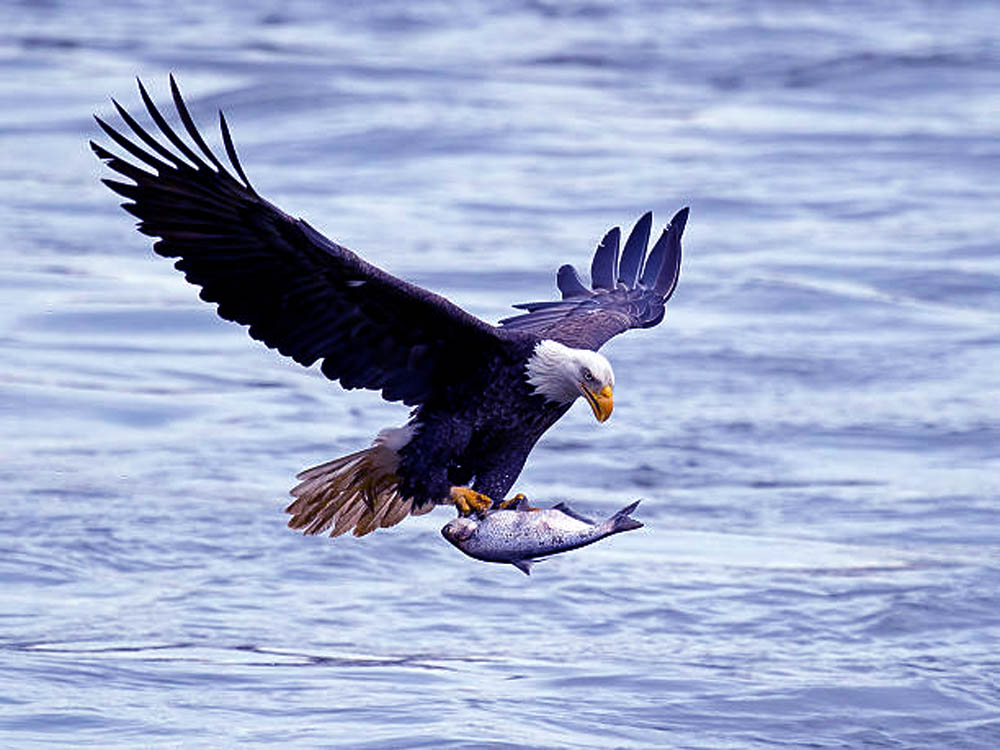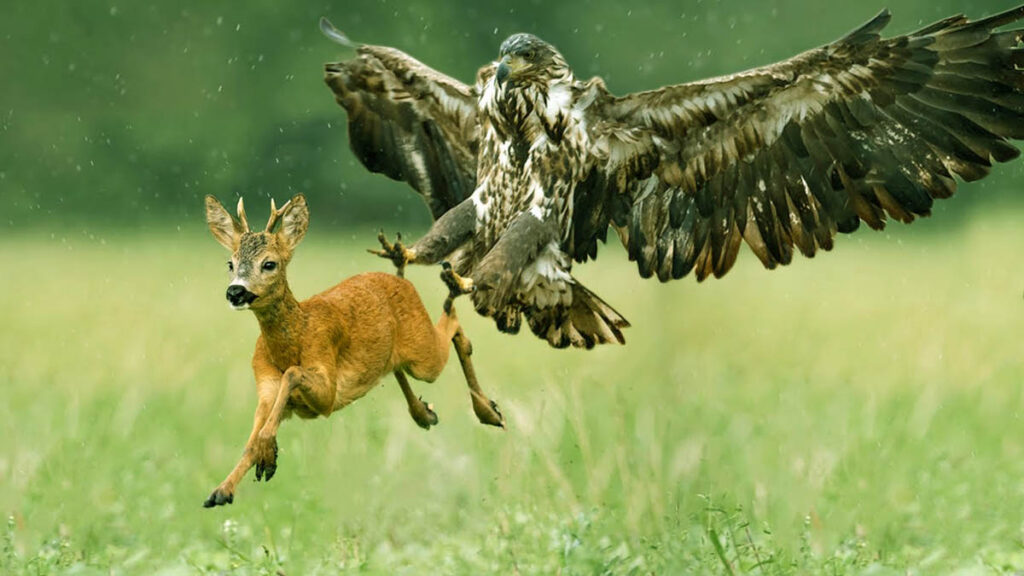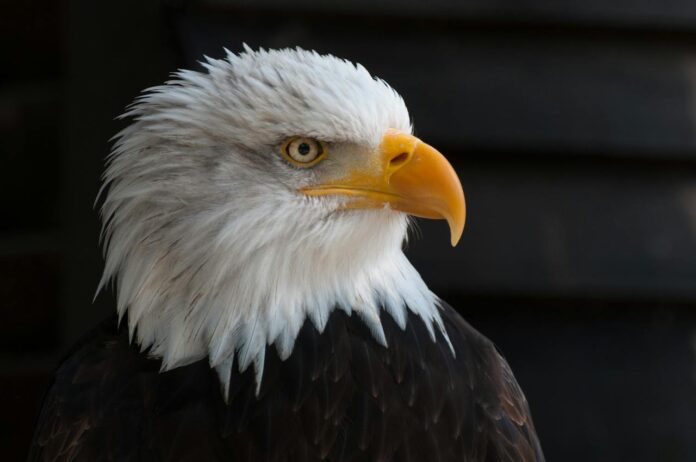In the vast expanse of the sky, where the horizon meets freedom, eagles reign as supreme hunters, embodying power, precision, and grace. These majestic birds of prey have fascinated humans for centuries, captivating our imaginations with their ability to soar to great heights and execute awe-inspiring hunting techniques. Join us on a journey into the world of eagles as we unveil the secrets behind their unparalleled hunting prowess.
Page Contents
Anatomy and Adaptations
To understand the hunting techniques of eagles, we must first delve into their anatomy and specialized adaptations that make them formidable hunters. Eagles possess powerful, sharp talons designed to seize and grasp their prey with an iron grip. These talons are complemented by a hooked beak, ideal for tearing through the flesh of their catch. Their keen eyesight, often several times sharper than that of humans, allows them to spot prey from incredible distances, enabling them to hunt with unparalleled accuracy.
Furthermore, eagles boast exceptional aerial abilities. Their broad wings and lightweight bones make them masters of flight, effortlessly gliding through the sky and providing them with a strategic advantage during hunts. Understanding these anatomical marvels is crucial to unraveling the intricacies of their hunting techniques.
Read Also : Ravens and Crows: Feathered Geniuses Among Us
The Art of Soaring
One of the most captivating aspects of an eagle’s hunting strategy is its mastery of soaring. Eagles utilize thermals, rising columns of warm air, to effortlessly ascend to great heights without expending much energy. This soaring technique not only conserves their strength but also grants them a bird’s-eye view of the terrain below, facilitating the identification of potential prey.
As they soar, eagles meticulously survey the landscape, scanning for any signs of movement or the glint of sunlight reflecting off the scales or fur of potential prey. This high-altitude reconnaissance allows them to strategize and plan their approach before executing a precise and rapid descent.

The Stealthy Stalk
Once an eagle has identified its target, it transitions from soaring to stalking. Eagles are known for their stealthy approach, utilizing the terrain and natural obstacles to conceal their presence. They fold their wings and enter a controlled descent, using gravity to their advantage while minimizing any audible disturbances.
During this descent, eagles rely on their acute vision to maintain a constant focus on their prey. With eyes locked on the target, they adjust their trajectory and position themselves for the perfect strike. The element of surprise is a crucial component of an eagle’s hunting technique, allowing them to close in on their prey undetected until the last moment.
The Dive and Capture
The defining moment of an eagle’s hunting technique is the breathtaking dive, also known as the stoop or stoop-and-swoop. This rapid descent, often reaching speeds of over 100 miles per hour, is a testament to the eagle’s extraordinary aerial prowess.
As the eagle nears its prey, it extends its talons forward, ready to strike with pinpoint accuracy. The moment of capture is a split-second culmination of precision, timing, and power. The eagle’s strong talons pierce through the plumage or fur of its prey, ensuring a secure hold. This swift and decisive action minimizes the risk of the prey escaping or retaliating.

Adaptability in Prey Selection
Eagles are versatile hunters, adapting their techniques based on the type of prey they pursue. Fish eagles, such as the bald eagle, showcase incredible fishing prowess. They soar over bodies of water, using their sharp eyesight to spot fish near the surface. Once a target is identified, they execute a spectacular dive, extending their talons to snatch the fish from the water with unparalleled accuracy.
On the other hand, terrestrial eagles, like the golden eagle, display a different set of hunting techniques. They may utilize the terrain to their advantage, using cliffs or rocks to conceal themselves before launching a surprise attack on ground-dwelling prey, such as rabbits or small mammals.
Social Hunting Strategies
While eagles are generally solitary hunters, some species exhibit social hunting behaviors, especially during the breeding season. The African Fish Eagle, for example, is known for engaging in cooperative hunting with its mate. This involves one eagle flushing out potential prey while the other waits in ambush, creating a synchronized strategy to increase their chances of success.
Additionally, some eagles are opportunistic scavengers, relying on the kills of other predators or carrion for sustenance. This adaptability in hunting strategies highlights the intelligence and resourcefulness of these magnificent birds.

Challenges and Risks
While eagles are unparalleled hunters, their pursuit of prey is not without challenges and risks. Larger prey, such as ungulates or large birds, may pose a physical threat during capture. Injuries sustained during the hunt can impact an eagle’s ability to fly and hunt, emphasizing the importance of successful captures for their survival.
Moreover, environmental factors, such as adverse weather conditions or competition with other predators, can influence the success of an eagle’s hunting endeavors. These challenges underscore the delicate balance between survival and the ever-present dangers of the natural world.
Read Also : Graceful Giants: A Closer Look at the World’s Tallest Land Animals – Giraffes
Conclusion
In the realm of the skies, eagles stand as majestic symbols of power, precision, and adaptability. Their hunting techniques, honed over millions of years of evolution, showcase the perfect marriage of anatomy, instinct, and intelligence. From the art of soaring to the breathtaking dive and capture, eagles embody the essence of predatory excellence.
As we gaze upon the vast expanse of the sky, let us marvel at the aerial acrobatics and hunting prowess of these magnificent creatures. In their world, the hunt is not just a means of survival; it is a symphony of skill, strategy, and unbridled freedom that echoes through the ages, leaving an indelible mark on the tapestry of the natural world.


